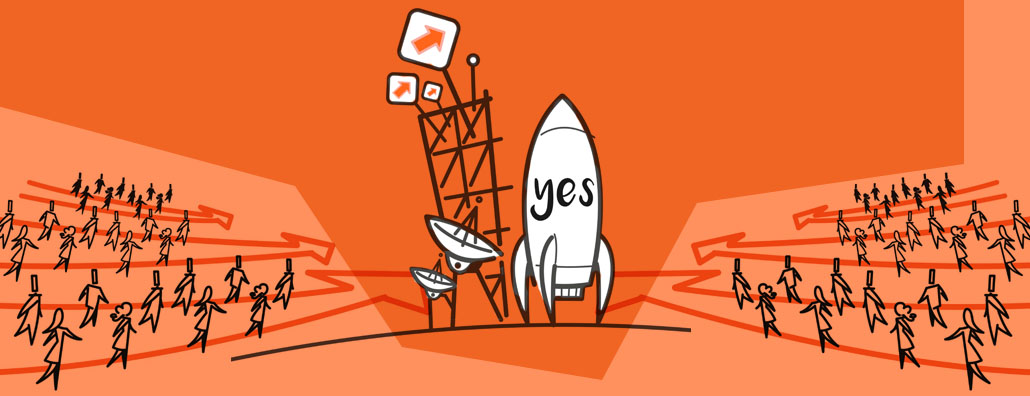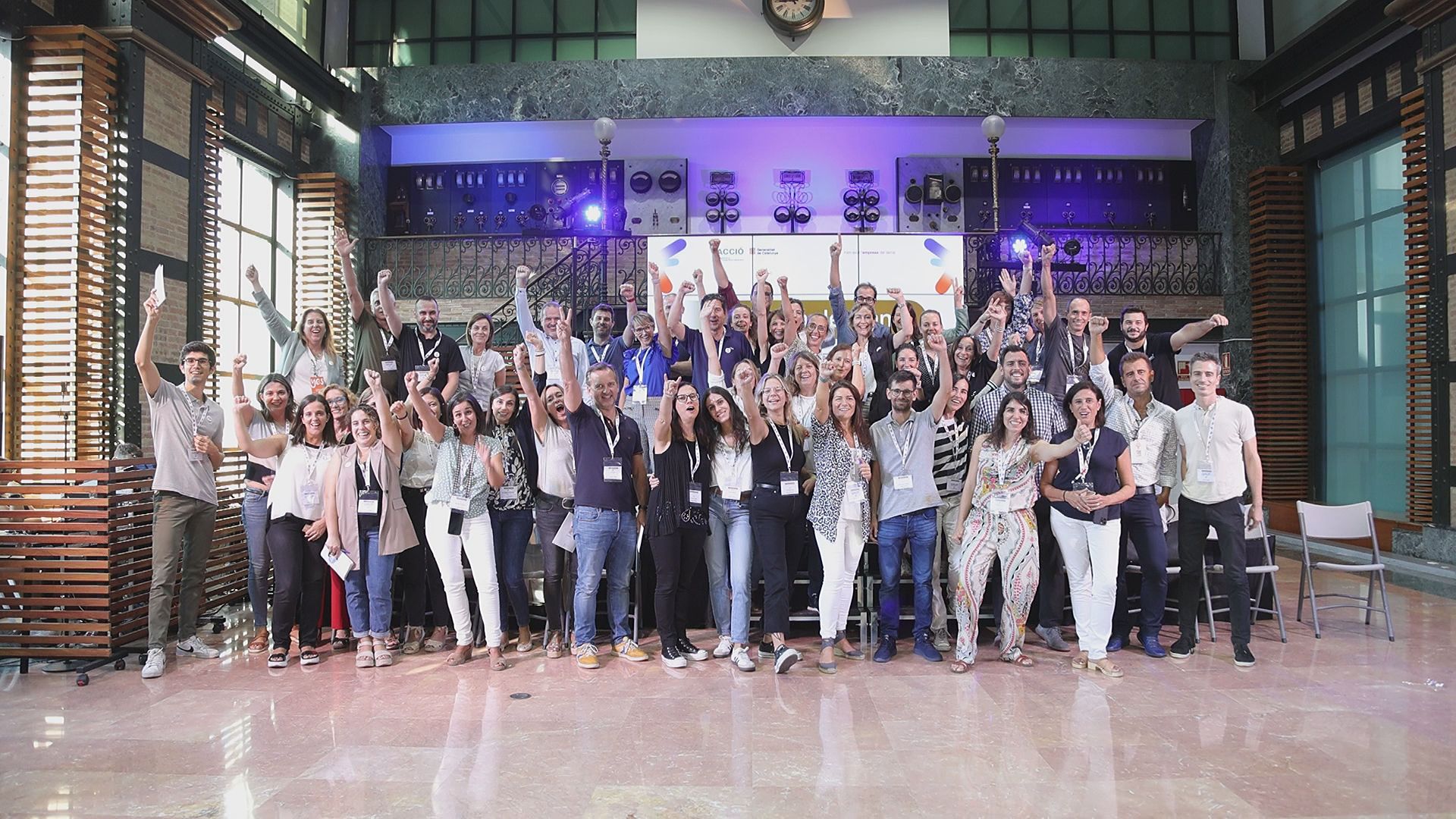Cultural change is persistently present in the “transformation” narrative of organizations. The corporate culture is the set of values, beliefs and behaviours that characterize an organization and make it unique compared to others. It is a crucial factor that influences the performance, motivation and satisfaction of employees, as well as the external perception of the company and, naturally, its business results.
It’s clear that if your company culture allows you to grow, if it gives you autonomy, if it empowers you and makes life easier, if it gives you a voice and a prominence, if it shows trust in your judgment… then you will give that company the best of yourself. If, on the other hand, you work in a hierarchical company, where only the boss’s voice is heard, where your ideas do not count, where there is no sense of community or team… then you will probably be looking for another job already.
People and their values have changed, especially after the lessons learned during the pandemic, which reminded us of our fragility as well as that of the planet; our eminently social and gregarious dimension, too… and organizations must adapt quickly to these changes to remain competitive. That is why cultural change in companies has become a fundamental aspect for their long-term success.
Cultural change in an organization refers to the transformation of its values, beliefs, attitudes and behaviours, so as to align these with strategic objectives and improve performance. The importance of cultural change in companies lies in the fact that it has a direct impact on the work environment, in the motivation and effectiveness of people and, therefore, in business results. Because culture and business go hand in hand.
Changing the culture can be challenging, especially if you can’t find a path that makes it easy for you to do so, but fortunately, there are facilitators (like Madavi, the YES Company) and methodologies and ways to change the way we change which offer us a positive and effective approach to achieving this. We can, for example, make use of Appreciative Inquiry, Positive Deviation, Expansive Circle, Conversations Worth Having, SOAR, Focus on Solution and Thinking Partner, which are some of the methodologies we use at Madavi. Learn about our methodologies for cultural change here.
Cultural change, a new, more effective approach
All that is needed is a change of paradigm; abandoning our habit of analyzing what doesn’t work, what we’ve done wrong, the things that aren’t getting us anywhere, in order to focus on the good experiences, on our strengths: those of each person, of the team and of the entire organization.
Who has to change the culture and the company?
We are used to hearing that “people are the engine that drives change in an organization.” And indeed, that is correct. Their commitment, motivation and desire to do it, to be the protagonists of the process, are essential to transforming the business culture effectively. On paper, then, everything is fine. But, why, then, are people rarely made the protagonists of the change?
When you ask those who are part of a company whether they think the company needs to change, everyone raises their hand, as we were reminded recently by Fernando Iglesias, CEO of Madavi The YES Company, in an article in Cinco Días. “When you ask who needs to change, they always point to someone else. So in reality change is easier to make from those who have no power, but who are the ones who really generate value, right?”
Those who do not have that power are most of the company, and that is where the team of Madavi, the YES Company, begins to generate change. We ensure that a perfect disorder occurs, which consists of generating such a level of independence that people can make decisions autonomously, beyond the path set by the management team.
The “cultural change” manuals always tell us about active participation; involving employees in the change process; of skill building, providing training and development to enable people to adapt to new values and practices; and of inspiring leadership. And all of this may seem fine, but we propose that the change be the worker’s decision, let no-one tell them how to do it. Only this way will it be truly real and effective.
Those same manuals tell us that the transformation of organizational culture requires a strategic and systematic approach; that it must involve all areas of the company and be based on collaboration and effective communication. With steps like: Evaluation of current culture, Identifying weaknesses in the existing culture; Goal setting; Implementation of actions to promote the new culture; Evaluation and adjustments. A textbook approach with 4 generic steps that – as we will stick our necks out and say – take us nowhere.
Cultural change from strengths
In contrast to these four steps, we suggest identifying and enhancing the organization’s strengths instead of focusing on its weaknesses. By applying this approach, companies can push ahead with a positive and sustainable cultural change.
By investigating and highlighting the existing strengths in the organization, what has been done well – so that it can be replicated by many – an environment of confidence, creativity and collaboration is fostered. Identifying what works well and amplifying it inspires employees and creates an impetus for change. Isn’t that common sense?
Furthermore, by identifying and enhancing employees’ strengths, a sense of belonging and commitment to the company is fostered. People feel part of a team where their skills are recognized and valued, which contributes to improving the work environment and has a quick and direct impact on the business.
One of the key principles of our method to change the way we change is the belief that organizations grow in the direction of what they investigate, that is, in those areas where they repetitively put their attention and energy. Therefore, if we put the focus on detecting problems, they grow, multiply and become more solid. On the other hand, if we explore the positive aspects of a company and its employees, we will foster a forward-thinking, collaborative, innovative and proactive culture, where employees are encouraged to take risks and try new things.
This approach means involving employees at all levels of the organization in the change process, as we have mentioned. By doing this, companies can harness collective knowledge and the creativity of their collaborators, leading to more significant and sustainable change. And thus, by bringing people together and aligning their strengths towards their aspirations, collective action is created. Quick and easy.
We mobilize everyone in the same direction, to multiply the energy for change and so that everyone is a protagonist.
Get started today!
If you’re interested in changing your company’s culture and impacting on your business, this proposal to change the way we change is the key to achieving it.
- Because it makes it easier to achieve change.
- Because the results come faster and simultaneously.
- Because the path, as the result of abundance, is more energizing.
- Because, being more natural, the transformation comes to stay.
If you want a successful and real cultural change, contact Madavi, the YES Company!, here.




